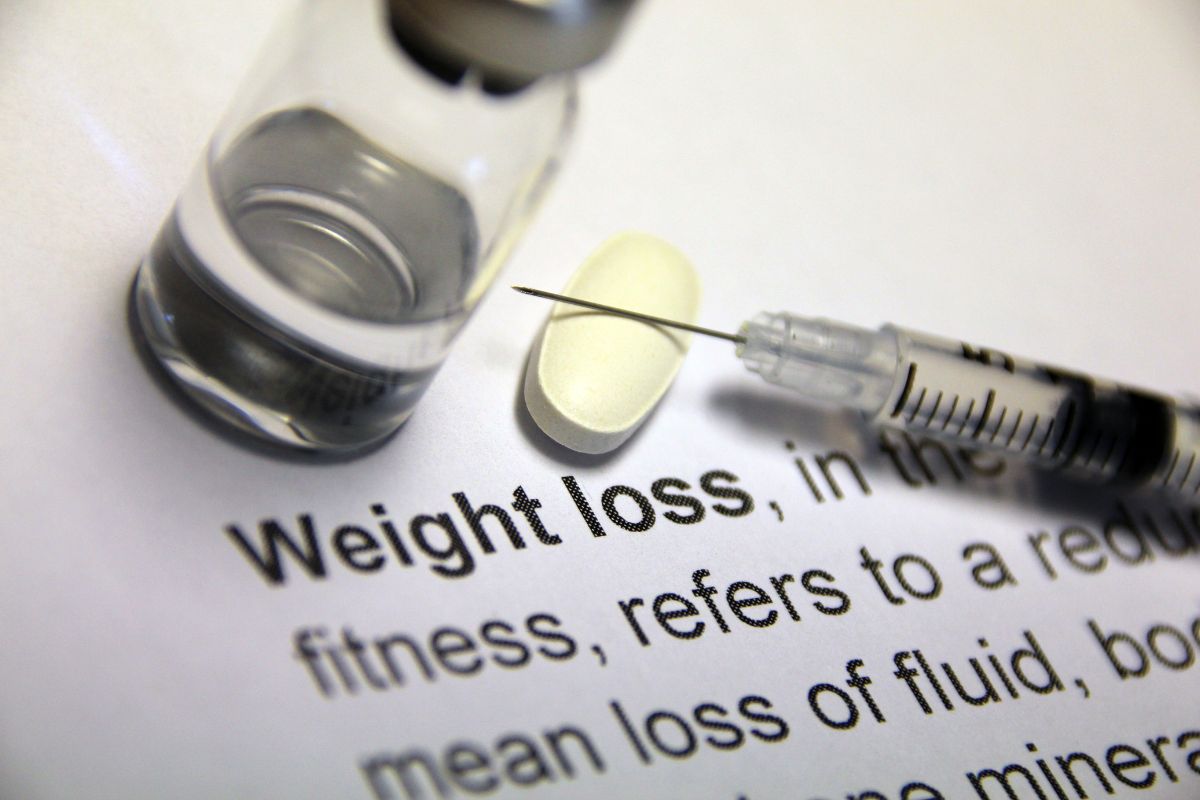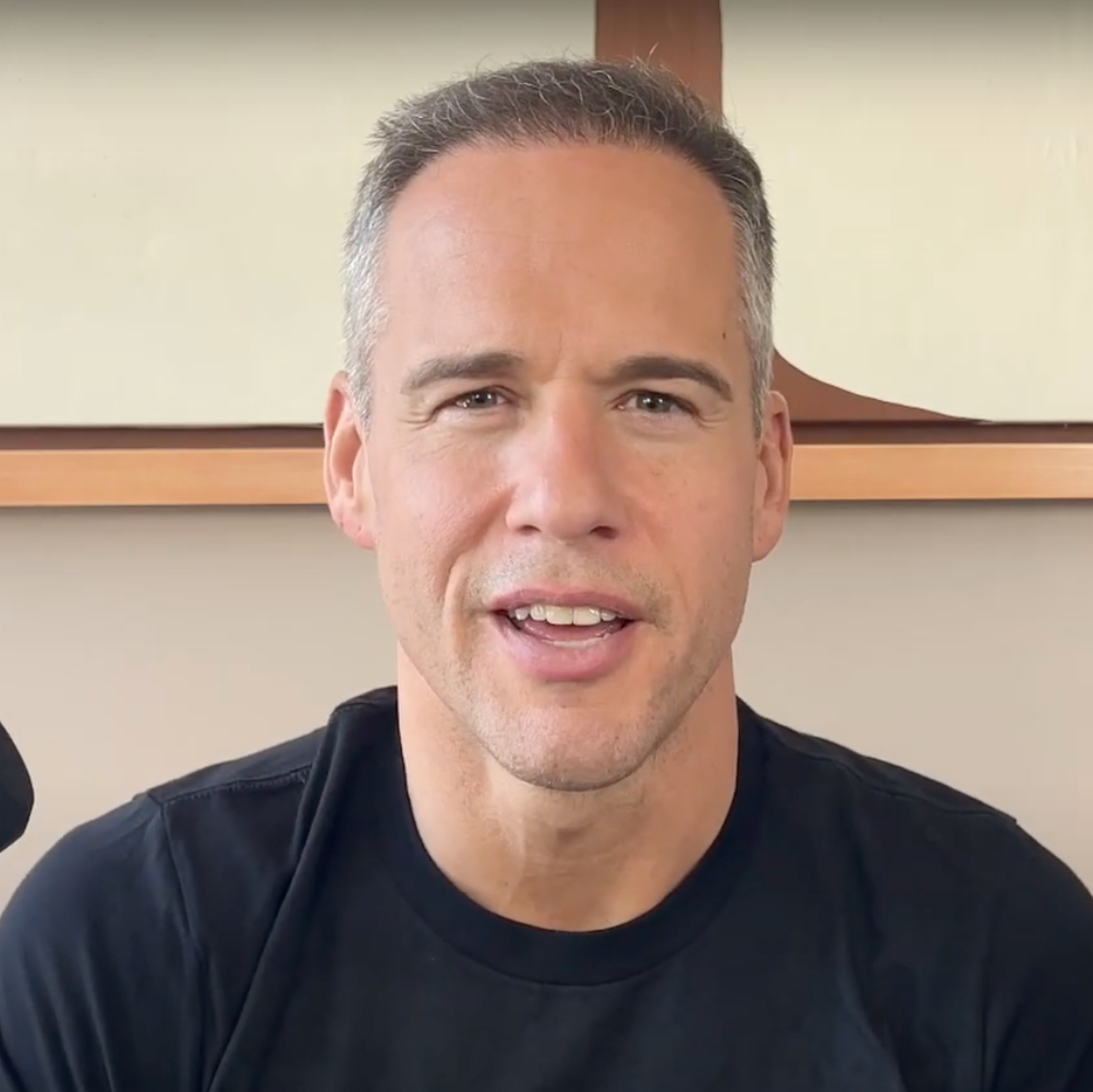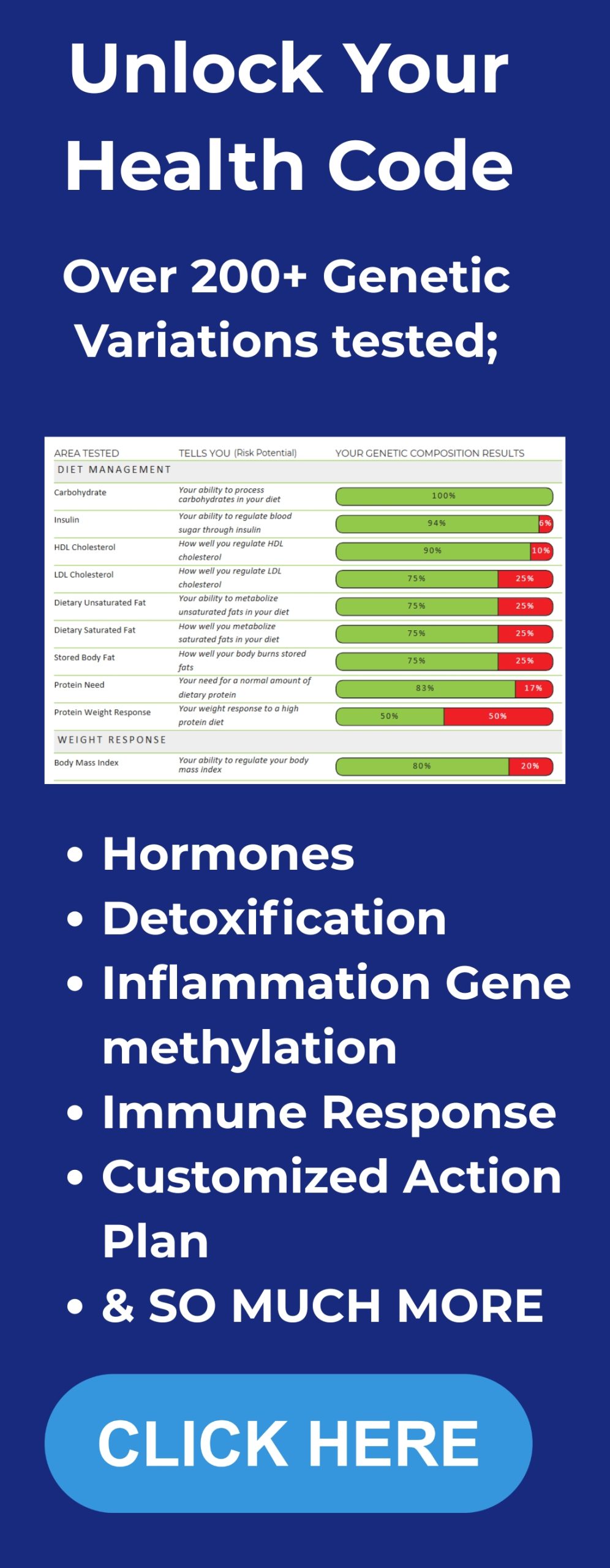Today we’re going to take a closer look at peptides for fat loss. A topic that has been gaining attention but is often clouded by hype around drugs like Ozempic and other GLP-1s. While these medications dominate headlines, there’s actually a much broader and more promising landscape of peptides and supportive protocols worth exploring. In this post, we’ll walk through a clear, evidence-based roadmap that blends the latest insights with actionable recommendations you can apply right away. We’ll also outline a supplement strategy backed by research, including exact dosages for vitamins and nutrients that support results, and highlight the single biggest mistake people make when starting these protocols plus how to avoid it. By the end, you’ll have a practical, step-by-step guide to using peptides more effectively and sustainably for fat loss.
Table of Contents
- Why this matters
- Overview: The five peptides I prioritize for fat loss (not including Ozempic)
- The one huge mistake that sabotages most people’s peptide results
- Labs and biomarkers to check before you start peptides
- Exact vitamin and supplement recommendations I commonly use with peptides and GLP-1 drugs
- How I phase peptides into a real-life plan (step-by-step)
- Safety, sourcing, and legal considerations
- How to know if peptides are working: outcomes and timelines
- FAQ
- Final thoughts and a practical checklist
Why this matters
Ozempic and its relatives have become household names because they reliably suppress appetite and improve blood sugar control for many people. That’s valuable, but there’s more to long-term fat loss and metabolic health than appetite suppression alone. Peptides, which are small chains of amino acids that act as signaling molecules, can offer targeted pathways for fat oxidation, growth hormone optimization, mitochondrial function, and tissue repair while avoiding some of the side effects people worry about with GLP-1 drugs.

But let me be blunt: peptides are not magic. They are tools. If your sleep, diet, movement, and labs aren’t in order, no peptide will make a lasting transformation. Our Integrate program helps clients lock in these fundamentals first. I’ll explain the top peptides, the exact doses that have been used clinically or are commonly recommended in practice, and the vitamin and supplement stack I recommend to support people using peptides or GLP-1 drugs. I’ll also explain how to test, what to monitor, and how to phase things in safely.
Overview: The five peptides I prioritize for fat loss (not including Ozempic)
Below are the top five peptides I focus on when the goal is fat loss and metabolic improvement especially for clients who either don’t want GLP-1 therapy or who want complementary tools. I’m not a physician; this is educational and not medical advice. Always consult your healthcare provider before starting any new pharmacologic or supplement regimen.
1) Red‑a‑Trutide (sometimes referred to as Retatrutide in literature)
Mechanism in plain English: Red‑a‑Trutide is a multi-agonist that stimulates GLP-1, GIP, and glucagon receptors. That means it hits appetite, insulin sensitivity, and metabolic rate concurrently. In practice, people experience stronger appetite suppression and faster fat loss than with some single-action agents.
Why I like it: In my experience and in the data discussed by clinicians, Red‑a‑Trutide can reduce cravings and accelerate fat loss. Some trials reported body fat reductions up to around 24% faster over a year in specific populations. Some people also report a mild mood boost or euphoric clarity when it’s working for them—this is anecdotal but consistent enough that I call it out.
Typical dosing (what’s been used in clinical trials): 1–12 mg per week, administered subcutaneously (under the skin). Different protocols titrate upward over weeks until the tolerated effective dose is reached. Clinical protocols vary; start low and work up under supervision. See the Phase 2 trial data showing retatrutide induced up to ~24.2% mean body weight reduction over 48 weeks at the highest dose. (NEJM study)
Administration notes: injections are subcutaneous into belly fat or other subcutaneous sites. Rotate sites and practice sterile technique. Refrigerate per manufacturer guidance where applicable.
Risks and side effects to watch for: nausea early in titration, possible GI distress, potential for hypoglycemia in people on insulin or certain diabetes medications, and unknown long-term effects when used outside clinical trials. Always check labs and consult a clinician before starting.
2) Epimerlin (a ghrelin mimic; often called ipamorelin or similar molecules in practice)
Mechanism: Acts like ghrelin analogs to stimulate the pituitary to release growth hormone (GH) pulses without increasing cortisol or prolactin significantly.
Why I use it: Epimerlin is excellent for supporting nighttime GH pulses—meaning better overnight recovery, improved fat oxidation, and improved lean mass retention. It’s particularly helpful for older clients or those with low GH pulse amplitude.
Suggested dosing: 200–300 mcg, typically 1–2 times daily. Common practice is to dose once on waking and once pre-bed. Individual protocols vary.
Administration notes: subcutaneous injections into a pinch of belly fat or other subcutaneous tissue. Use pre-bed dosing to leverage natural GH secretion during sleep.
Side effects: usually minimal compared with full GH therapy, but small risks include increased water retention (rare) and local injection site reaction. Monitor glucose and general well-being.
3) Tesamorelin (referred to in the transcript as Tesla Morland)
Mechanism: Synthetic growth hormone–releasing hormone (GHRH) analog. Stimulates GH secretion and can preferentially affect visceral fat (the dangerous fat around organs).
Why it matters: Tesamorelin has been clinically studied for reducing visceral fat, especially in conditions like HIV-associated lipodystrophy. For example, a randomized, placebo-controlled study found that 2 mg daily of tesamorelin for 6 months lowered visceral adipose tissue by ~42 cm² compared to placebo, plus modest reductions in liver fat. But the same mechanism makes it valuable for anyone targeting visceral adiposity, which is correlated with cardiometabolic risk.
Suggested dosing: 1–2 mg daily, typically administered before bed subcutaneously. Common cycles are 12–16 weeks.
Notes and monitoring: Tesamorelin can be associated with fluid shifts or elevations in fasting glucose in sensitive individuals. If you have metabolic syndrome, prediabetes, or diabetes, monitor glucose and A1c closely. Get baseline labs and repeat them during a cycle.
4) AOD9604 (referred to in transcript as AOD90604)
Mechanism: This is a fragment of growth hormone that aims to trigger lipolysis (fat breakdown) without classical GH side effects (like IGF-1 elevation).
Why I like it: It’s used specifically for daytime fat burning because it can promote lipolysis without significant impact on insulin or IGF-1. For clients who need daytime metabolic support, AOD9604 can be helpful.
Suggested dosing: 300–500 mcg daily, often dosed in the morning to promote daytime fat oxidation.
Notes: Minimal impact on blood sugar is a selling point, but as with all peptides, responses vary. Monitor how you feel and check baseline labs.
5) MOTS‑C
Mechanism: A mitochondrial-derived peptide that activates AMPK and enhances insulin sensitivity and cellular energy production.
Benefits: MOTS‑C helps improve glucose uptake, supports exercise performance, and can mimic some cellular benefits of exercise by improving mitochondrial signaling. It’s particularly useful if you’re on a more carbohydrate-friendly diet and need to handle glucose better.
Suggested dosing: 5–10 mg subcutaneously every 3–4 days. Some practitioners use more frequent dosing at lower amounts; follow a clinician’s protocol.
Administration notes: subcutaneous dosing into lower belly fat is common. MOTS‑C is not a substitute for exercise but is a potent adjunct for mitochondrial and metabolic support.
Bonus: GHK‑Cu
Mechanism and use: GHK‑Cu is not primarily for fat loss but is a peptide used for skin tightening, wound healing, and reducing inflammation. I include it because some clients want aesthetic benefits along with metabolic improvements.
Typical use: topical formulations or low-dose systemic use in clinical contexts. For skin and inflammation, topical use is common. If you’re using peptides for fat loss and want better skin repair, GHK‑Cu can address inflammation and skin quality while you lose weight.
The one huge mistake that sabotages most people’s peptide results

I’ll cut to the chase: people treat peptides as a silver bullet and skip the fundamentals. You can shoot dozens of peptides into your belly and still fail if the underlying system is broken. The single most common error I see is starting peptides without full optimization of behavior, labs, and recovery. That wasteful mistake costs money, time, and sometimes health.
When I work with clients at Betterlife, we insist on a foundation before or alongside any peptide introduction. I call that foundation the Three M’s: movement, muscle, and meals. These are non-negotiable and form the baseline that lets peptides be effective and safe.
Movement
Movement is life. If you’re sedentary, your metabolic flexibility, insulin sensitivity, and mitochondrial function are compromised. Before starting any peptide, I require clients to adopt a daily movement habit. This doesn’t mean marathon training, it means consistent, purposeful movement and an activity template that fits your life.
- Daily walk: a minimum of 20–45 minutes on most days is ideal.
- Take walking calls or schedule walking meetings when feasible.
- Stand and move every 45–60 minutes during desk work.
Even modest improvements in muscle mass make peptides more effective and preserve lean tissue during fat loss.
Muscle
Strength and muscle matter for long-term health and metabolic rate. Peptides that promote growth hormone pulses or improve mitochondrial function will work better if you have or build muscle. I recommend a consistent strength program:
- 2–4 full-body resistance sessions per week.
- Focus on compound lifts or multi-joint movements that you can do safely.
- Progressive overload: aim to increase weight, reps, or density over time.
Meals
Caloric control and dietary quality are still the engine of fat loss. You don’t have to live on chicken and broccoli, but you do need a sustainable calorie deficit if fat loss is the goal.
My practical approach for people who want to enjoy food while losing fat:
- Replace high-calorie, low-enjoyment items with lower-calorie alternatives that still deliver satisfaction.
- Examples: an air-fried fries recipe instead of deep-fried; lean homemade burgers with flavorful toppings; swapping one alcoholic beer for a nonalcoholic option when social.
- Prioritize protein: aim for 0.7–1.0 grams per pound bodyweight per day depending on goals and age.
Labs and biomarkers to check before you start peptides
Never start peptide therapy without a baseline panel and a plan to retest. Peptides influence hormones and metabolic pathways, and you need objective data. Here’s the baseline panel I recommend and the target ranges I generally look for. These are general clinical targets and should be individualized with a licensed clinician.
Essential baseline tests
- Comprehensive Metabolic Panel (CMP) — liver enzymes, electrolytes, kidney function. Target: within lab normal ranges; pay attention to ALT/AST and creatinine.
- Fasting glucose and fasting insulin — check insulin resistance. Target fasting glucose <100 mg/dL; fasting insulin <10 μIU/mL ideally.
- Hemoglobin A1c — target <5.7% for non-diabetic; 5.7–6.4% prediabetes; discuss thresholds with clinician.
- Lipid panel — total cholesterol, LDL, HDL, triglycerides. Target: triglycerides <150 mg/dL; HDL >40 mg/dL men, >50 mg/dL women.
- Thyroid panel — TSH, free T3, free T4, and thyroid antibodies if indicated.
- Male hormone panel — total testosterone, free testosterone, SHBG, estradiol (if male).
- CBC — to detect anemia or other hematologic issues.
- Vitamin D (25‑OH), B12, ferritin (iron stores).
- hs‑CRP — inflammation marker; aim for <1 mg/L for low risk; discuss with clinician.
- IGF‑1 if you are considering GH releasing peptides like tesamorelin or ipamorelin—baseline IGF‑1 helps you monitor effects.
Re-testing schedule: repeat key labs at 6–12 weeks after starting a peptide that affects metabolic or endocrine systems, then periodically based on results and clinician advice.
Exact vitamin and supplement recommendations I commonly use with peptides and GLP-1 drugs
The recommendations below are intended to support metabolic health, mitigate common deficiencies, and protect organs during fat-loss therapies. These are safe, evidence-aligned doses I use with many clients, but I always emphasize lab-based personalization. If you are taking other medications, especially blood thinners, thyroid meds, or diabetes drugs, check with your clinician.
Daily foundational stack
- Vitamin D3: 2,000–5,000 IU daily. Aim to get 25‑OH vitamin D between 40–60 ng/mL. If your baseline is low, higher loading doses under supervision may be needed.
- Magnesium (glycinate): 200–400 mg nightly. Supports sleep, recovery, and helps with muscle cramps. Glycinate is well tolerated and less likely to cause loose stools.
- Omega‑3 (EPA/DHA): 2,000–3,000 mg combined EPA+DHA daily. Supports inflammation control, cognitive function, and lipid profile improvement.
- Creatine monohydrate: 3–5 g daily. Supports muscle preservation during calorie deficits and improves strength training outcomes.
- Protein supplement (whey or plant-based): aim to hit protein targets; many clients use 20–40 g post-workout to ensure adequate daily protein intake.
- Multivitamin: a high-quality multivitamin with bioavailable forms of B vitamins, zinc, selenium, and iodine—taken daily with food.
Targeted metabolic support
- Alpha-lipoic acid (ALA): 300–600 mg daily. It can support insulin sensitivity and antioxidant defenses. Use cautiously if on diabetes meds.
- N‑acetylcysteine (NAC): 600 mg once or twice daily. Supports glutathione production and liver health.
- Berberine: 500 mg two to three times daily (with meals) as a metformin-like insulin sensitizer if tolerated and under clinical supervision. Useful if fasting glucose or insulin are elevated and if not on other contraindicated meds.
- Probiotic: a multi-strain probiotic daily to support gut health and satiety signaling. Choose a product with at least 10–20 billion CFU and strains like Lactobacillus and Bifidobacterium.
Sleep and stress support
- Magnesium glycinate (already listed): nightly for sleep support.
- Melatonin: 0.5–1 mg up to 3 mg nightly for short-term circadian adjustment. Use the lowest effective dose.
- L‑theanine: 100–200 mg during high-stress periods or before bedtime to promote relaxation without sedation.
Micronutrient notes
- Zinc: 10–30 mg daily depending on diet and labs. Avoid chronic high doses without testing (zinc competes with copper).
- Copper: usually included in a good multivitamin; monitor if you supplement zinc long term.
- Iron and ferritin: supplement only if labs show deficiency; iron overload is dangerous—get labs first.
Why this stack matters: peptides and GLP-1 agents change appetite, glucose handling, and sometimes body composition quickly. A foundation of vitamins and minerals reduces the risk of deficiency symptoms, supports mitochondrial function, helps maintain muscle, and mitigates side effects like constipation, nausea, or fatigue.
How I phase peptides into a real-life plan (step-by-step)
Below is a practical timeline I use with clients who are ready to add peptides to an already optimized lifestyle. This is an educational template, not a prescription. Always work with a clinician for dose adjustments and monitoring. You can also use DNA testing for personalized insights to guide your peptide and supplement strategy.
- Week −6 to −0: Optimize basics
- Establish movement routine (daily walks, 2–4 strength sessions/week).
- Set protein and calorie targets and implement dietary swaps for sustainability.
- Start the foundational supplement stack and correct any acute deficiencies identified in labs.
- Complete baseline labs (see list above).
- Week 0: Select peptide and initial education
- Choose a peptide based on goals (e.g., Red‑a‑Trutide for appetite and broad metabolic improvement, MOTS‑C for mitochondrial support, AOD9604 for daytime fat burning).
- Discuss and confirm potential interactions with current meds (e.g., insulin, sulfonylureas, SGLT2 inhibitors).
- Learn sterile injection technique, site rotation, storage, and signs of adverse reactions.
- Week 1–4: Low-dose initiation and close monitoring
- Start low and titrate slowly. For GLP-1 agonists or multi-agonists, titration reduces nausea and GI side effects.
- Monitor symptoms daily: appetite change, energy, bowel habits, sleep, mood.
- Repeat fasting glucose at week 2 if you’re diabetic or insulin-treated; otherwise monitor clinically.
- Week 6–12: Full dose and optimization
- Reach the effective dose if tolerated.
- Assess weight, body composition (if available), and symptom profile.
- Retest labs at 8–12 weeks for metabolic and endocrine markers.
- Maintenance: Adjust, cycle, or pause
- Based on labs and goals, continue, reduce, or cycle peptide therapy (e.g., 12–16 week cycles for some GH-related peptides like tesamorelin).
- Continue lifestyle and supplement support indefinitely.
Safety, sourcing, and legal considerations
Quality and legality matter. In many regions, some peptides and pharmaceuticals are prescription-only. Buy only from reputable sources and use under medical guidance. Avoid unverified suppliers or products sold with vague dosing instructions. If you’re unsure, work with a clinician or a compounding pharmacy that provides clear testing and batch information.
Important safety tips:
- Do not mix peptides or drugs without guidance. Some combinations require careful monitoring.
- If you’re pregnant, breastfeeding, have active cancer, or are immunocompromised, avoid starting peptide therapy without specialist input.
- If you’re on blood sugar-lowering medications, start peptides in a supervised setting; hypoglycemia risk can increase.
How to know if peptides are working: outcomes and timelines
Expect different signals depending on the peptide:
- Appetite-modulating peptides (e.g., Red‑a‑Trutide): appetite suppression can appear in days to a few weeks; weight loss typically accumulates over months.
- GH-modulating peptides (e.g., ipamorelin/epimerlin, tesamorelin): you may notice improved sleep and recovery within weeks; visceral fat reductions are measured over 12–16 weeks.
- MOTS‑C and AOD9604: improvements in exercise tolerance and daytime fat oxidation can be felt in weeks, with measurable changes in body composition over months.
Track progress with objective measures: body weight, waist circumference, body composition if available, lab values (fasting glucose, A1c, lipids, IGF‑1 where relevant), and subjective measures like energy and sleep quality.
FAQ
Q: Are peptides safer than Ozempic and other GLP-1 medications?
A: “Safer” depends on the peptide, the person, and the context. GLP-1 drugs like semaglutide (Ozempic/Wegovy) have robust clinical trial data and clear regulatory approval for certain uses. Several peptides such as Red‑a‑Trutide are promising and may offer broader metabolic mechanisms, but they often have less long-term safety data. Always weigh the evidence and use a clinician to guide decisions.
Q: Can I take peptides while on Ozempic or another GLP-1 drug?
A: Combining agents that affect the same pathways can increase benefits but also risks. For example, adding a peptide that further suppresses appetite or lowers glucose may require adjustments to diabetes medications. Never combine therapies without medical supervision.
Q: How long should I be on peptides?
A: It depends on the peptide and your goals. Some clients use certain peptides in cycles (e.g., 12–16 weeks), while others use longer-term GLP-1 drugs for chronic conditions like diabetes or for long-term weight management. The safest approach is regular monitoring and reassessment every 2–3 months.
Q: What are the most common side effects I should watch for?
A: Gastrointestinal upset (nausea, constipation), injection site reactions, water retention with some GH-related peptides, changes in blood glucose, and rare allergic reactions. If you experience chest pain, severe shortness of breath, or sudden systemic symptoms, seek emergency care.
Q: Are there natural ways to mimic the benefits of these peptides?
A: Yes. Exercise, adequate sleep, resistance training, high-protein diet, and nutrients that support mitochondrial health (omega-3s, magnesium, vitamin D) all mimic or augment certain peptide benefits. Peptides should complement—not replace—these pillars.
Q: Where can I find more personalized help?
A: If you want a structured program that covers the Three M’s, lab testing, supplementation, and responsible peptide integration, visit Betterlifeprotocols.com for resources and coaching options. In clinical settings, I pair peptide plans with lab monitoring, nutrition coaching, and strength programs to maximize safety and outcomes.
Final thoughts and a practical checklist
Peptides represent powerful tools when used the right way. But the single best predictor of success is starting with the basics: movement, muscle, and meals, and making sure your labs and recovery are optimized. If you use peptides with that foundation, you’ll get the results faster, safer, and more sustainably.
Here’s a quick checklist to keep on hand:
- Baseline labs ordered and reviewed.
- Movement plan: daily walk + 2–4 strength sessions/week.
- Protein target set and a sustainable calorie plan in place.
- Supplement stack started: vitamin D3, magnesium glycinate, omega‑3s, creatine, protein.
- Injection education completed with sterile technique and storage plan.
- Monitoring plan set: symptom journal + lab retests at 8–12 weeks.
If you’re curious about peptides like Red‑a‑Trutide, Epimerlin, Tesamorelin, AOD9604, or MOTS‑C, or you want an honest discussion about Ozempic and its side effects, I’m glad you’re thinking critically. There’s often more than one path to sustainable fat loss and metabolic health. If you want help putting all of this together into a single, personalized plan, check out our Integrate program, where we’ll walk you through labs, supplements, movement, and safe peptide integration.





